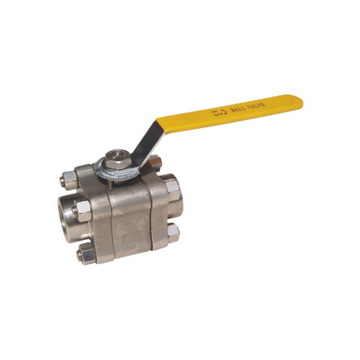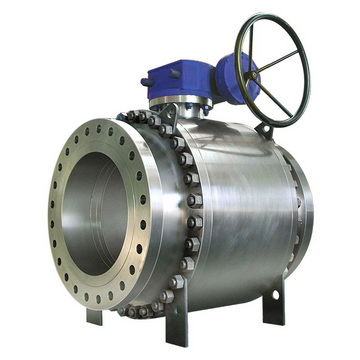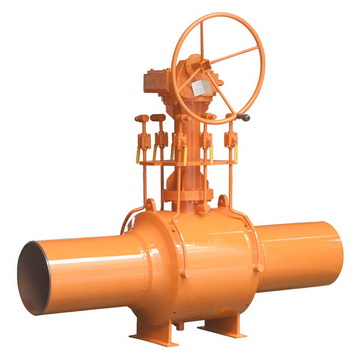Ball Valve Seat vs Gasket: What's the Key Difference?
Content Menu
● Core Roles and Conceptual Distinctions
● Material Paradigms: Seat versus Gasket
● Structural and Design Considerations
● Operational Contexts and Application Scenarios
>> Oil and Gas, Upstream to Downstream
>> Offshore Drilling Platforms
>> Manufacturing and OEM Integration Considerations
>> Maintenance Strategy and Life-Cycle Considerations
>> Quality, Safety, and Compliance
>> Emerging Trends and Future Directions
>> Case Studies and Practical Examples
● FAQ
>> Q1 What is the primary difference between Ball Valve Seat and Gasket?
>> Q2 Which scenarios favor metal seats over soft seats?
>> Q3 How should gasket materials be chosen for aggressive fluids?
>> Q4 How often should Ball Valve Seats be replaced?
>> Q5 What design practices reduce sealing failures?
Introduction
We are a China-based factory focused on high-performance seal solutions for ball valves, including the Ball Valve Seat and Gasket, serving oil and gas, seawater desalination, and offshore platforms through OEM collaborations. This article provides a comprehensive view of how Ball Valve Seat and Gasket differ, how to select materials, how to design for reliability, and how to implement practical, cost-effective solutions in demanding industrial environments. The goal is to empower foreign brands, wholesalers, and manufacturers to optimize their valve assemblies, maintenance strategies, and lifecycle costs.

Core Roles and Conceptual Distinctions
Ball Valve Seat is the component that forms the primary seal with the ball. It sits inside the valve body and directly interfaces with the ball to block or permit flow. Because it bears the brunt of contact with the moving part and the corrosive or particulate-laden media, the Ball Valve Seat must offer excellent wear resistance, chemical compatibility, and dimensional stability under operating temperatures and pressures. The seat's design influences sealing efficiency, torque requirements, and the valve's overall reliability in aggressive service.
Gasket, in contrast, is a flexible sealing element located at interfaces such as flange-to-flange or cover-to-body. Its main function is to fill gaps between mating surfaces, compensate for surface irregularities, and provide a secondary line of defense against leaks. The Gasket is engineered for compressibility, resilience, and compatibility with the mating materials and the process fluid. While not directly in the flow path, the Gasket plays a critical role in ensuring leak-tight closures during installation, startup, and maintenance.
Material Paradigms: Seat versus Gasket
Ball Valve Seat materials must balance hardness, wear resistance, and chemical compatibility with aggressive media. Key options include:
- PTFE-based seats: Excellent chemical resistance and low friction, suitable for a broad range of fluids, including corrosive chemicals. They can suffer from creep and deformation at elevated temperatures, so high-temperature variants or reinforced formulations are often used in demanding service.
- PTFE-graphite composites or reinforced PTFE: Enhanced high-temperature performance and improved wear characteristics while retaining good chemical resistance.
- PEEK and other engineering polymers: Higher temperature tolerance and mechanical strength, often selected for high-pressure, high-temperature applications.
- Metal seats (stainless steel, bronze, or other alloys) or ceramic-coated seats: Provide superior temperature and wear resistance for extremely demanding environments, including abrasive service or significantly high pressures. Their higher friction and torque implications are considered in actuator sizing.
Gasket materials prioritize compression behavior, reusability, and compatibility with surface finishes and processed fluids. Common choices include:
- PTFE: Excellent chemical resistance and broad temperature capability; often used as a universal gasket material when chemical compatibility is essential.
- Graphite: Exceptional high-temperature performance and sealing capability in demanding conditions but may require anti-seize or anti-galling measures in some assemblies.
- Non-asbestos composites: Balanced properties for diverse applications, designed to meet industry standards for safe and durable sealing.
- Fluoroelastomers (FKM), Hydrogenated Nitrile (HNBR), and other elastomers: Selected for rubber-like resilience, heat resistance, and compatibility with specific fluids.
- Specialty composites: Customized formulations designed for particular media, including aggressive acids or hydrocarbons, and for long service life under cyclic loading.
Structural and Design Considerations
Seat design must ensure uniform contact pressure across the ball's sealing surface, minimizing localized wear and ensuring consistent sealing performance over the valve's life. Critical factors include:
- Surface finish quality: Very smooth, precise mating surfaces reduce wear and improve seal longevity.
- Contact geometry: The seal face geometry must accommodate the ball's rotation and translation with minimal friction-induced heat.
- Thermal compatibility: Differential expansion between seat material and ball or body material can introduce sealing stresses; appropriate material pairing mitigates this risk.
- Replaceability: OEM-friendly modular seat designs facilitate rapid field maintenance and reduced downtime; standardized seat inserts enable easier stocking and replacement.
Gasket design focuses on appropriate compression, resilience, and sealability under varying bolt load and thermal cycles. Important aspects include:
- Correct gasket profile: The geometry must align with flange or cover seating surfaces to avoid leakage paths.
- Compression characteristics: Adequate elasticity to accommodate thermal expansion and contraction without losing seal integrity.
- Surface finish compatibility: Gasket materials perform best when mating surfaces present appropriate hardness and cleanliness.
- Fastening strategy: Even torque distribution and bolt sequence reduce the risk of gasket extrusion and leaks.
Operational Contexts and Application Scenarios
Oil and Gas, Upstream to Downstream
- In upstream stages involving high pressures and potentially abrasive fluids, Ball Valve Seat materials with high wear resistance and corrosion resistance are essential. Choosing a metal seat or a reinforced PTFE seat can significantly extend service life, provided the accompanying ball-to-seat clearance and lubrication strategy are properly managed.
- Gasket selection for flanged connections in oil and gas pipelines must coexist with the chosen flange standard (e.g., ANSI, DIN) and the sealing interface. A PTFE or graphite gasket with appropriate thickness and compression range ensures reliable flange sealing under thermal cycles and transient pressures.
Seawater Desalination
- Sea salt and chlorides pose aggressive challenges to sealing surfaces. Ball Valve Seat materials that resist chloride-induced corrosion and have stable mechanical properties at the operating temperature range are crucial. Composite seats or ceramic coatings may be employed to resist abrasive particulates and long-term chemical attack.
- Gasket materials used in desalination plants must tolerate continuous exposure to saline environments and cleaning agents. Graphite- or PTFE-based gaskets are common, with sealing designs that resist cold and hot flushing cycles, as well as CIP (clean-in-place) procedures.
Offshore Drilling Platforms
- Offshore platforms demand durability, reliability, and ease of maintenance in a challenging environment. Sellers often favor Ball Valve Seat designs that provide robust sealing with minimal torque requirements and long service intervals. Modular seats reduce maintenance downtime, particularly in remote locations.
- The Gasket choice on offshore equipment must support frequent maintenance access while maintaining tight seals under vibration and temperature swings. The ability to verify gasket integrity during inspection cycles is a practical asset.

Manufacturing and OEM Integration Considerations
- Customization and standardization: OEMs benefit from a balanced approach that combines modular seat options with a standardized gasket family, enabling quick SKU creation, faster prototyping, and scalable production.
- Material traceability and quality control: For Ball Valve Seat and Gasket assemblies, traceability of raw materials, processing steps, and assembly torque data helps meet stringent industry standards and customer expectations.
- Surface treatments and coatings: Advanced coatings or surface hardening on seats reduce wear rates and extend service life in abrasive or erosive service. Surface treatments on metal seats can delay galling and reduce seizure risks.
- Documentation and support: Comprehensive technical documentation, installation instructions, maintenance guides, and performance data sheets empower OEM customers to integrate products efficiently and confidently.
Maintenance Strategy and Life-Cycle Considerations
- Predictive maintenance and data-driven decisions: Monitoring service conditions and using historical data to forecast seat wear and gasket life can optimize maintenance schedules and minimize unscheduled downtime.
- Repair versus replacement decisions: The modularity of Seat components facilitates targeted replacements rather than full valve overhauls, reducing cost and downtime.
- Spare parts strategy: Maintaining an ample inventory of Seat inserts and gasket sets ensures rapid response to field service needs and supports global distribution networks.
Quality, Safety, and Compliance
- Ball Valve Seat and Gasket assemblies must satisfy industry standards and certifications relevant to the application domain, including chemical resistance, pressure ratings, and temperature tolerances. A robust quality management system ensures consistency from raw materials through final assembly and testing.
- Safety and environmental protection requirements are central to sealing performance. Proper material selection, testing, and documentation minimize leakage risks, protecting personnel and ecosystems, especially in offshore and desalination contexts.
Emerging Trends and Future Directions
- Advanced materials: Ongoing research into higher-temperature plastics, reinforced polymers, and ceramic composites aims to push the envelope of Ball Valve Seat performance in extreme service.
- Smart sealing solutions: Integration of condition-monitoring features, coatings that signal wear states, and data-driven maintenance could transform how Ball Valve Seat and Gasket life are managed in remote or harsh environments.
- Global supply resilience: OEMs increasingly seek diversified suppliers and modular designs to reduce lead times and manage price volatility, particularly for critical components like Ball Valve Seat inserts and high-grade gaskets.
Case Studies and Practical Examples
- Case studies highlight how a switch from standard PTFE seats to reinforced PTFE-graphite composites reduced leak rates by a measurable margin without increasing torque excessively.
- Another example demonstrates how replacing a traditional gasket with a graphite-metal composite gasket improved high-temperature sealing stability in a desalination plant while simplifying on-site maintenance procedures.
Operational Best Practices
- Training and competency: Field technicians should be trained in proper Seat inspection techniques, torque verification, and gasket seating practices to avoid common sealing errors.
- Assembly discipline: Cleanliness, correct seating, and controlled bolt torque sequences are essential to achieving consistent, leak-free joints.
- Life-cycle cost emphasis: While material and seat choices may have higher upfront costs, the longer-term savings from reduced leaks, longer service intervals, and easier maintenance should dominate the decision framework.
Long-Term Strategic Value
- For OEM customers, investing in a modular Seat strategy and a robust gasket family can reduce time-to-market and improve reliability across global operations.
- A transparent, documentation-rich approach to Ball Valve Seat and Gasket selection builds trust with end users, helping to secure repeat business and international expansion.
Conclusion
Ball Valve Seat provides the core, enduring seal within a valve assembly, resisting wear, temperature, and chemical attack under demanding service. Gasket supplies the essential, flexible sealing layer at interfaces, enabling reliable assembly and maintenance across varying conditions. In high-stakes environments such as oil and gas, seawater desalination, and offshore platforms, the synergy between Ball Valve Seat and Gasket determines not only immediate performance but also long-term reliability, safety, and lifecycle cost. A well-conceived combination of seat materials, gasket selection, and modular design approaches enables OEMs to deliver robust, maintainable, and cost-effective valve solutions to global markets.

FAQ
Q1 What is the primary difference between Ball Valve Seat and Gasket?
A Ball Valve Seat forms the main seal with the ball and endures wear and media interaction, while a Gasket provides the secondary sealing on interfaces like flanges and covers, accommodating surface irregularities and facilitating maintenance.
Q2 Which scenarios favor metal seats over soft seats?
A Metal seat is favored in high-temperature, high-pressure, or erosive environments where long-term seal integrity is required, while a soft seat (such as PTFE-based) may be chosen for lower loads or higher chemical compatibility where lower friction is essential.
Q3 How should gasket materials be chosen for aggressive fluids?
A Gasket material should be selected based on chemical compatibility with the fluid, temperature range, and flange design, with PTFE, graphite, and specialized elastomers as common options.
Q4 How often should Ball Valve Seats be replaced?
A Replacement frequency depends on service conditions, including pressure, temperature, media composition, and flow velocity. In harsh service, seats may require more frequent evaluation during maintenance outages.
Q5 What design practices reduce sealing failures?
A Precision machining of seat surfaces, careful material pairing, controlled assembly torque, clean interfaces, modular seat components, and comprehensive installation and maintenance documentation collectively reduce sealing failures.
Hot tags: Ball Valve Seat vs Gasket, Ball Valve Seat Difference, Gasket vs Ball Valve Seat, Valve Seat vs Gasket Function, Ball Valve Seal Comparison, Gasket and Valve Seat Roles, Ball Valve Gasket Selection, Valve Seat vs Gasket Performance, Key Differences in Valve Seats, Ball Valve Seals Explained